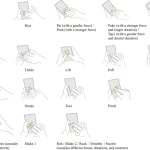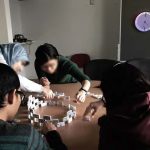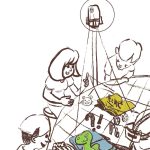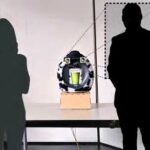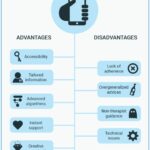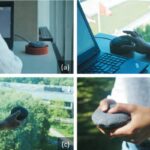On collective stress:
M. Xue, AffectiveViz: Designing Collective Stress Related Visualization, PhD Thesis, Department of Industrial Design, Eindhoven University of Technology, Eindhoven, 2021.
FULLTEXT: PDF REFERENCE: BibTeX EndNote
Q. Wang, AromaHub – Designing Collective Stress Intervention for Office Vitality, EngD Thesis, Department of Industrial Design, Eindhoven University of Technology, Eindhoven, 2024.
FULLTEXT: PDF REFERENCE: BibTeX EndNote
Y. Bao, M. Xue, J. Gohumpu, Y. Cao, and J. Hu, “PopStress: Designing Organizational Stress Intervention for Office Workers,” Frontiers in Computer Science, vol. 5, pp. 1265399, 2023.
FULLTEXT: PDF REFERENCE: BibTeX EndNote
DOI: 10.3389/fcomp.2023.1265399
M. Hoekstra, P.-l. Lu, T. Lyu, B. Zhang, and J. Hu, “Collective Stress Visualization Enabled by Smart Cushions for Office Chairs,” Distributed, Ambient and Pervasive Interactions. Smart Environments, Ecosystems, and Cities, HCII 2022, Lecture Notes in Computer Science Series, 13325, pp. 278-290, Cham: Springer International Publishing, 2022.
FULLTEXT: PDF REFERENCE: BibTeX EndNote
DOI: 10.1007/978-3-031-05463-1_20
D. Stappers, Investigating Collective Stress – Behavioral Influences Amongst Office Workers by a Dynamic Painting, M12 Project Report, Department of Industrial Design, Eindhoven University of Technology, Eindhoven, 2022.
FULLTEXT: PDF
G. Valkenburg, THE WINDOW TO RELIEF – Reducing collective stress at the office, FBP Project Report, Department of Industrial Design, Eindhoven University of Technology, Eindhoven, 2022.
FULLTEXT: PDF
M. Xue, R.-H. Liang, J. Hu, B. Yu, and L. Feijs, “Understanding How Group Workers Reflect on Organizational Stress with a Shared, Anonymous Heart Rate Variability Data Visualization,” in CHI Conference on Human Factors in Computing Systems Extended Abstracts, New Orleans, LA, USA, 2022, pp. Article 27.
FULLTEXT: PDF REFERENCE: BibTeX EndNote
DOI: 10.1145/3491101.3503576
M. Hoekstra, Bringing valuable insights to office environments by visualizing health–data, FMP Report, Department of Industrial Design, Eindhoven University of Technology, Eindhoven, 2021.
FULLTEXT: PDF
J. Buining, and Y. Miao, Less Collective Stress, Better Workspace, B2 Project Report, Department of Industrial Design, Eindhoven University of Technology, Eindhoven, 2021.
FULLTEXT: PDF
M. Xue, R. Liang, B. Yu, M. Funk, J. Hu, and L. Feijs, “AffectiveWall: Designing Collective Stress-Related Physiological Data Visualization for Reflection,” IEEE Access, vol. 7, pp. 131289-131303, 2019.
FULLTEXT: PDF REFERENCE: BibTeX EndNote
DOI: 10.1109/ACCESS.2019.2940866
M. Xue, R.-H. Liang, J. Hu, and L. Feijs, “ClockViz: Designing Public Visualization for Coping with Collective Stress in Teamwork,” Proceedings of the Conference on Design and Semantics of Form and Movement – Sense and Sensitivity, DeSForM 2017, Series, M. B. Alonso and E. Ozcan, eds., pp. 67-78, Rijeka: InTech, 2017.
FULLTEXT: PDF REFERENCE: BibTeX EndNote
DOI: 10.5772/intechopen.71220
Continue reading Research on Stress and Collective Stress
